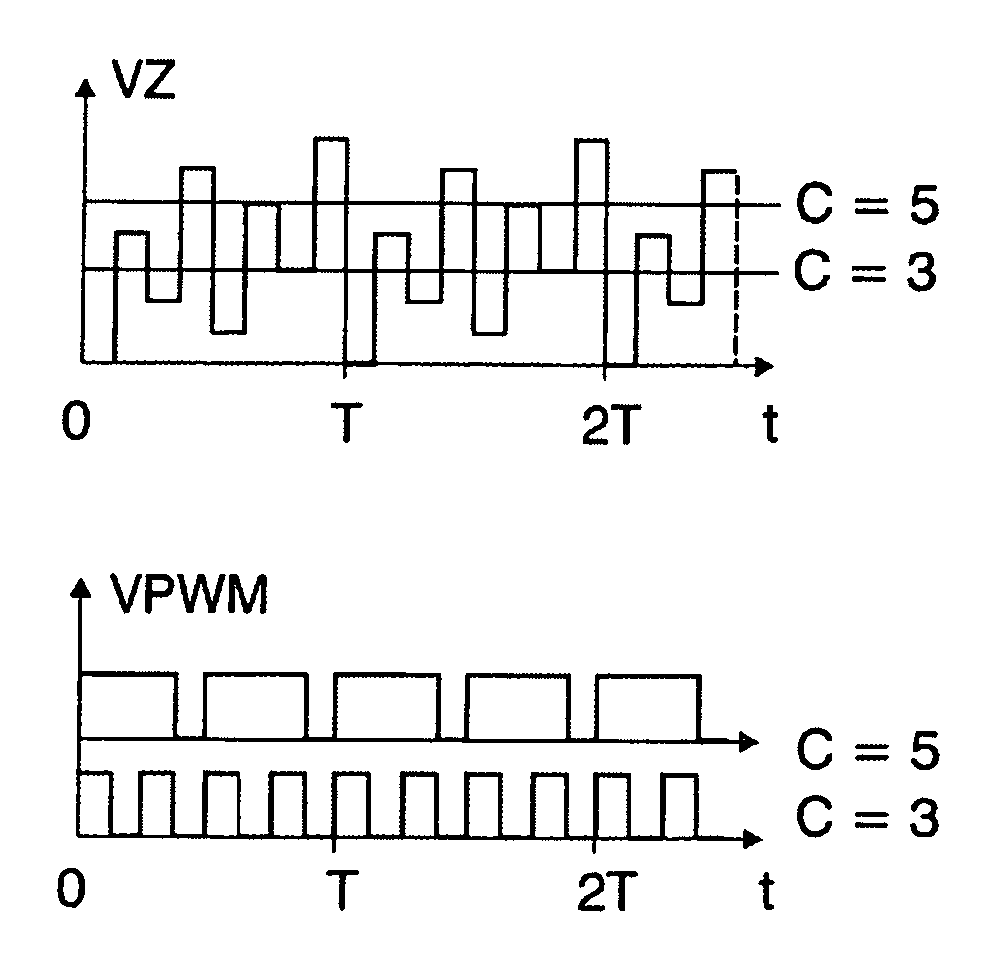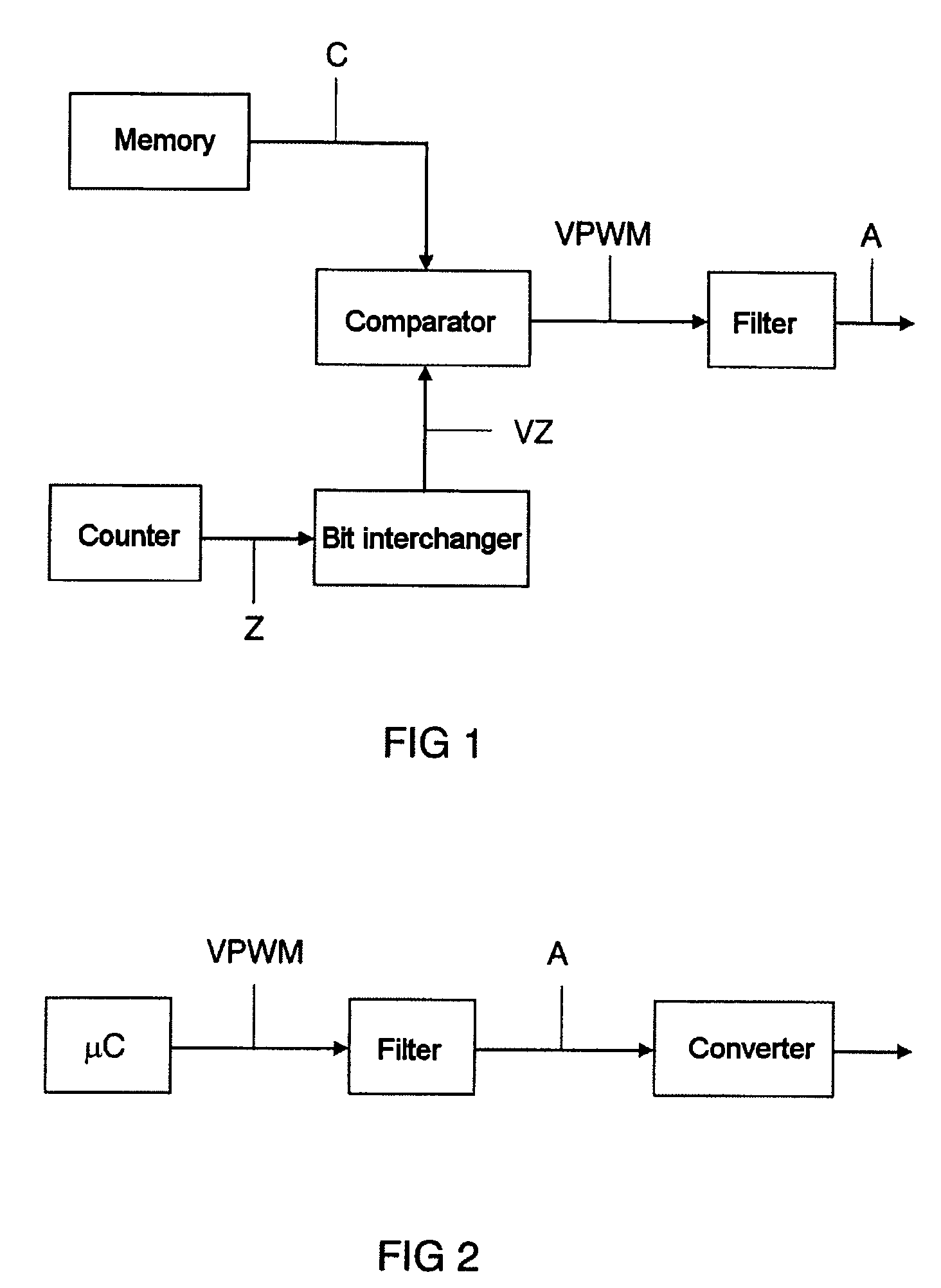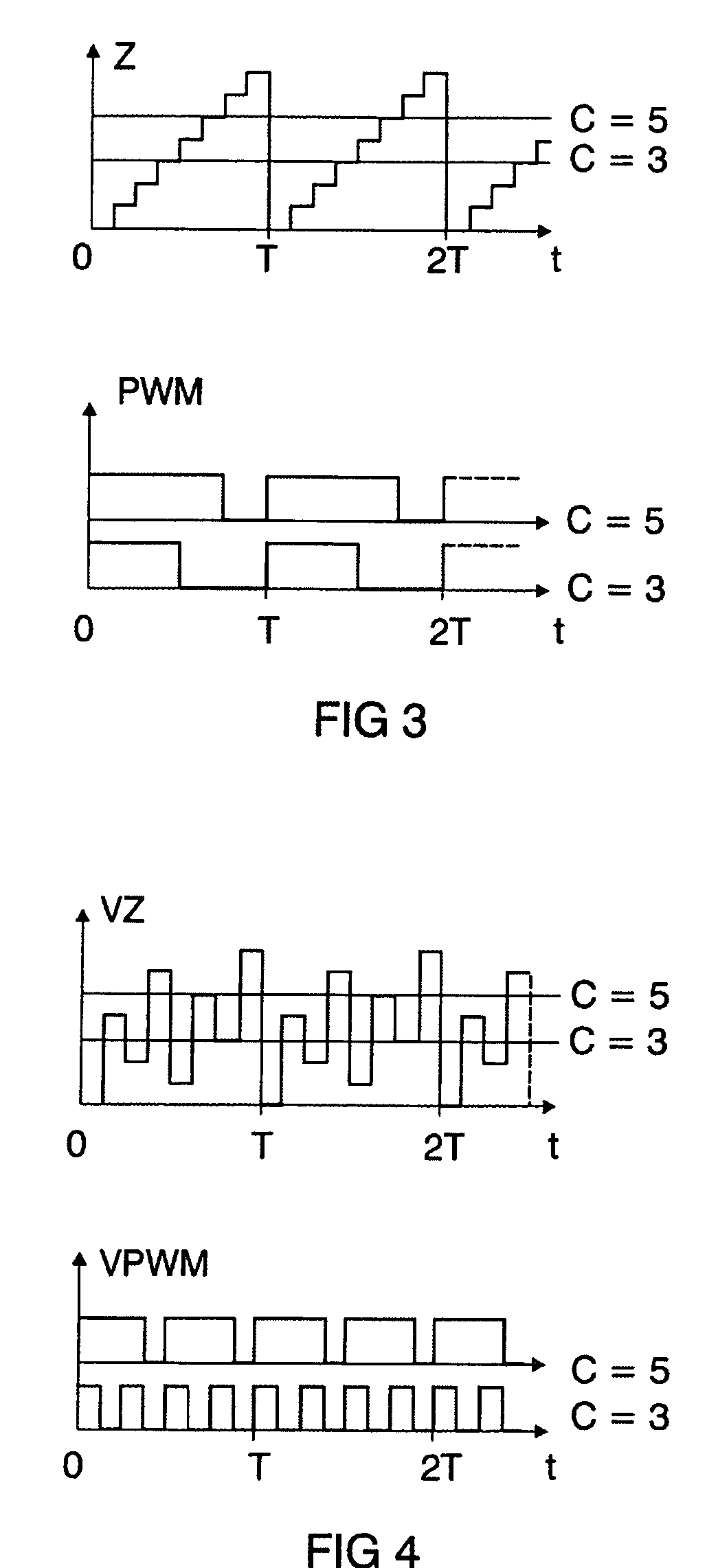Digital-to-analog conversion with an interleaved, pulse-width modulated signal
a digital-to-analog conversion and pulse-width modulation technology, applied in the field of digital-to-analog conversion, can solve the problem of common problems in the conversion of digital signals to analog signals, and achieve the effect of increasing the number of logic state changes within the pattern repetition time, maximizing the number of logic state changes given predetermined subdivision into time subblocks, and increasing the accentuation of higher-frequency frequency components
- Summary
- Abstract
- Description
- Claims
- Application Information
AI Technical Summary
Benefits of technology
Problems solved by technology
Method used
Image
Examples
Embodiment Construction
[0032]FIG. 1 shows, using a block diagram, the principle of the invention in a first exemplary embodiment. The method steps explained below with reference to separate components are implemented in this exemplary embodiment actually inside a microcontroller shown in FIG. 2, with the exception of the filter.
[0033]A memory contains digital values C as the digital signal which are input in a comparator. There, they are compared with a signal which is generated by means of bit interchange from a signal Z from a counter. For this purpose, reference is made to the explanations for FIGS. 3 and 4. The comparator generates, by means of the comparison between the digital signal C and the interleaved counter signal VZ from the bit interchanger, an interleaved, pulse-width modulated signal VPWM which is given to a filter, in this case a second-order RC element, and is filtered there to form an analog signal A.
[0034]FIG. 2 shows, likewise using a block diagram, an exemplary embodiment in which a ...
PUM
 Login to View More
Login to View More Abstract
Description
Claims
Application Information
 Login to View More
Login to View More - R&D
- Intellectual Property
- Life Sciences
- Materials
- Tech Scout
- Unparalleled Data Quality
- Higher Quality Content
- 60% Fewer Hallucinations
Browse by: Latest US Patents, China's latest patents, Technical Efficacy Thesaurus, Application Domain, Technology Topic, Popular Technical Reports.
© 2025 PatSnap. All rights reserved.Legal|Privacy policy|Modern Slavery Act Transparency Statement|Sitemap|About US| Contact US: help@patsnap.com



